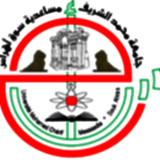Center of Academic Publications |
Lactation physiology of camel in Algeriahttps://www.univ-soukahras.dz/en/publication/article/5448 |
| Maria CHIKHA (2025) Lactation physiology of camel in Algeria. University of souk ahras |

Download Article
Abstract
-
This work aimed to study the physiological processes involved in she-camels during lactation in a semi-intensive breeding system in south eastern Algeria. Hematological analyses were conducted during different reproductive periods including the dry period, early pregnancy, lactogenesis, and galactopoiesis and stages of lactation. Additionally, biochemical analyses were conducted during the four months antepartum and postpartum.And assessment of physicochemical and quantitative modification of milk in the first four months of lactation. The findings demonstrated a considerable rise in white blood cells, lymphocytes, granulocytes, and the percentage of lymphocytes during lactogenesis and galactopoiesis. a significant rise was observed in monocytes during galactopoiesis. For monocyte percentage, a significant increase was observed during lactogenesis. The peak granulocyte percentage was noted in the initial stage of pregnancy. Red blood cell counts and hematocrit levels were significantly high during the dry period and early pregnancy. Conversely, hemoglobin, mean corpuscular hemoglobin, and mean corpuscular hemoglobin concentration levels were significantly higher during lactogenesis and galactopoiesis. There was a low value of mean corpuscular volume during early pregnancy and of platelets during lactogenesis and galactopoiesis. Regarding biochemical parameters, glucose increased significantly at the third month postpartum (p<0.05), and triglycerides peaked at 2 months postpartum (p<0.05). Cholesterol levels elevated significantly at the third month postpartum (p<0.05), and low-density lipoprotein rose substantially from the second to the fourth month postpartum (p<0.05). High- density lipoprotein decreased significantly at the first month antepartum (p<0.05) and rose at 3 months postpartum (p<0.05). Calcium levels increased considerably from 2 to 3 months postpartum (p<0.01). A significant difference in iron levels (p<0.05) was observed between the third month antepartum and the fourth month postpartum. Urea dropped abruptly at one month after parturition (p<0.05) and elevated at two months after parturition (p<0.01). Creatinine levels rose substantially from 3 to 1 month antepartum (p<0.05) and decreased afterward. Creatinine rose considerably at three months before parturition (p<0.05) compared to the antepartum period. ALTindices decreased notably at 2 months postpartum (p<0.05).Adecrease was observed in the percentages of lactose, salts, proteins, non-fat solids, and pH, as well as an increase in freezing point during the lactation months. A peak was noted in the second month of lactation in fat percentage and density, and in the third month in milk quantity.Apositive correlation was found between milk non-fat solids and triglycerides, between milk protein and triglycerides, between density and blood triglycerides and iron, between lactose and triglycerides, and between freezing point and LDL. Negative correlations were observed between milk protein and creatinine, between lactose and LDL, between salt percentage and creatinine, and between freezing pointand blood triglycerides.
Keys words: Galactopoiesis, Hematological Parameters, Lactogenesis, Metabolites, Milk, She-Camel
Information
| Item Type: | Thesis |
|---|---|
| Divisions: |
» Laboratory of Science and Techniques for Living » Institute of Agricultural and Veterinary Sciences |
| ePrint ID: | 5448 |
| Date Deposited: | 2025-07-03 |
| Further Information: | Google Scholar |
| URI: | https://www.univ-soukahras.dz/en/publication/article/5448 |
BibTex
@phdthesis{uniusa5448,
title={Lactation physiology of camel in Algeria},
author={Maria CHIKHA},
year={2025},
school={University of souk ahras}
}
title={Lactation physiology of camel in Algeria},
author={Maria CHIKHA},
year={2025},
school={University of souk ahras}
}

 عربي
عربي Français
Français International Students
International Students